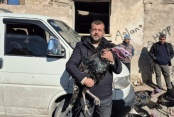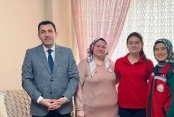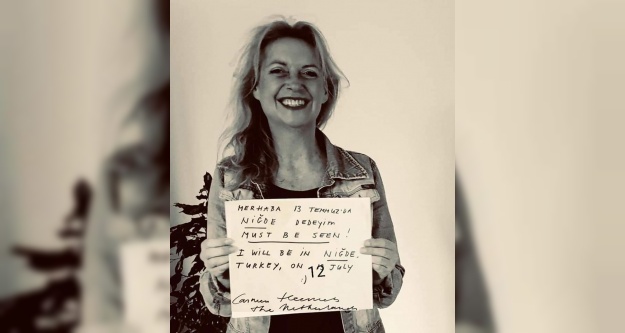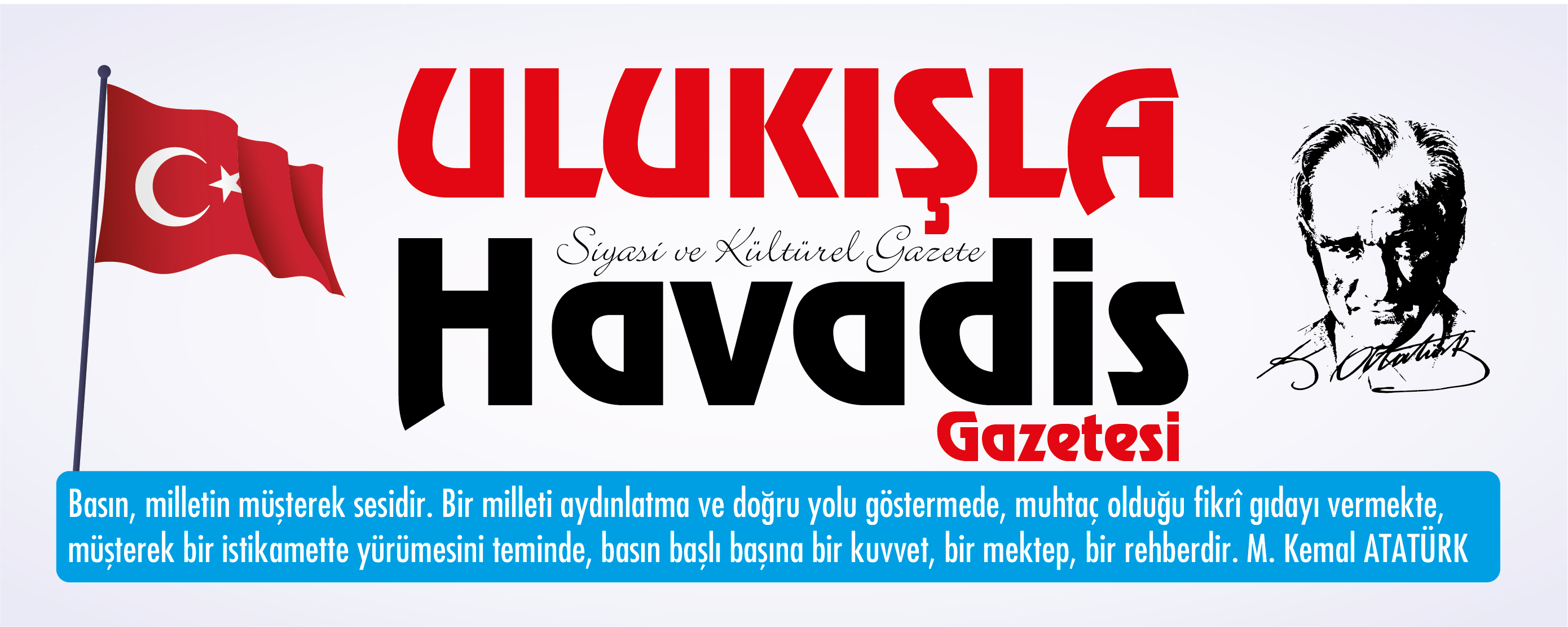F. Tan: Merhaba. Sizi biraz tanıyabilir miyiz?
C. Heemels: Tabi ki; adım Carmen Heemels. Hollanda'da yaşıyor ve çalışıyorum. Görsel sanatçı olarak yurtiçi ve yurtdışında sergilerim oldu. Türkiye, İran, Kore Cumhuriyeti, Belçika ve Finlandiya dahil olmak üzere yurtdışında da defalarca davet edildim.
Görsel sanatçı olmanın yanı sıra, kâr amacı gütmeyen KunstSalon Kasteel Daelenbroeck sanat galerisinin sahibi ve küratörüyüm. Sergilerin yanı sıra şiir akşamları gibi performanslar da düzenliyorum. Dans, müzik ve küçük konserler için de sahne alıyorum. Resim öğretmeni olarak da bir ortaokulda görev yapıyorum. Ayrıca yurtiçi ve yurtdışında sergiler düzenliyorum.
GAPi (Uluslararası Orijinal Sanat Projeleri), PAS, L’Art'ın eş-organizatörü / üyesiyim ve ayrıca Art Niğde'nin eş başkanıyım. Safa Büte'ye (Hollanda’dan) teşekkürler.
F. Tan: Alaylı mı? Sanat okulundan mısın?
C. Heemels: Evet, sanat eğitimimi ve diplomamı, Sittard / Maastricht'teki sanat akademisinden aldım. Ayrıca çizim, resim, el sanatları ve görsel tasarım dersleri verdim.
F. Tan: Çalışmalarınızda hangi teknikleri kullanıyorsunuz?
İşim esas olarak enstalasyonlardan oluşuyor. Mekansal kolajlar diyebilirsiniz. Peyzajda da çok çalışıyorum. Manzara benim stüdyom ve çalışmamı Land Art'a yerleştirebilirsiniz. Benim için bu süreçle, bağlantıyla, dünyayla ve etrafımdaki her şeyle ilgili. Bu işler genellikle geçici niteliktedir. Eylem, fotoğraf veya filme kaydedilir. Mesela “1 m2” projesinin kalıcılığı sonsuza kadar olduğu doğrudur. Gerçekten görünür olmadan, ama iş (yani bende) sonsuza kadar o eylem yerine bağlı kalır.
Karma medya ve video projelerinde de çalışıyorum.
F. Tan: Pandemi (Covid 19) sürecinde sanatsal etkinliklere katılabildiniz mi? Covid 19 sizi ve çevrenizi nasıl etkiledi?
C. Heemels: Evet, bu garip zamanda Türkiye, Güney Kore ve Hollanda'da sergilere katılmama izin verildi. Ayrıca Yunanistan ve İtalya'da çeşitli posta sanatı projelerine katıldım. Aynı zamanda arazi sanatı projeleri üzerinde çalışmaya devam ediyorum.
Ayrıca çevrimiçi sergiler için davetiyeler aldım, ancak bunu seçici bir şekilde hallettim çünkü benim için sanat bir şey hakkında olmalı. Konu ya da tema bana dokunmalı. Elbette bu süre zarfında birçok girişimin ortaya çıkmasının harika olduğunu düşünüyorum, ancak mümkün olduğunca somut "şeylere" odaklanmak istiyorum.
COVID-19'un etkisi ise; bazı projeler için kendi bölgem dışındaki yerlere seyahat edemiyorum.
F. Tan: Ülkenizdeki sanat ve sanatçıya bakış açısı nedir?
C. Heemels: Bir sanatçının veya kurumun geçmişten bugüne kadar gelen itibarı, belirleyici bir rol oynamaz. Sanatsal yeniliğe ek olarak, sanatın sosyal önemi de giderek daha önemli bir rol oynuyor. Karma bir izleyici kitlesi hayal eden, temaları cinsiyet, göç ve etnik kökenle ilgili tartışmalara bağlayan ve sağlanan hizmetler için sanatçılara ödeme yapan ve örneğin, denetim kurullarında daha fazla çıkar çatışması olmayan yönetmenlere sahip olan sanat kurumlarının destek almaya uygun olma olasılığı daha yüksektir. Bu konularda ise; Hollanda sanatında bu noktada kazanılacak çok şey var.
Bununla birlikte, genel ruh hali son derece olumludur. Hollanda, özellikle lisansüstü sanat ortamıyla 'gurur duyabilir'. Özellikle De Ateliers, Van Eyck ve Rijksacademie gibi önemli Hollanda sanat akademilerinde, yeni yönetmenler "vurguda kaymalara ve önemli kurs değişikliklerine" yol açtı.
F. Tan: İnsanlar sanatçıyı nasıl görüyor? İnsanların sanata bakışlarından memnun musunuz?
C. Heemels: Bu oldukça zor bir soru, benim için şu soruyu gündeme getiriyor: "Sanat bizim için gerçekte ne yapıyor?"
Diyelim ki aşkla ilgili bu soruyu sormalıyız. Aşk aslında bizim için ne yapar? Bazıları sevginin yalnızlığı ortadan kaldırdığını veya çocuk ürettiğini söyleyebilir. Muhtemelen en önemli şeyi özlüyoruz, o da sevginin hayatlarımızı başka türlü sahip olamayacağınız özel duygular ve deneyimlerle zenginleştirmesidir. Sanatta aynı. Aşk gibi sanat da insan olmanın bir parçasıdır. Birinin yıllar önce yaptığı bir resme bakma deneyiminde benzersiz bir şey var. Sanata araçsal bir şekilde yaklaştığımızda bu deneyimi kaybedeceğimizden korkuyorum. Sanatçılar daha sonra çalışmalarını izleyicilerin görmek istediklerini gösterecek şekilde uyarlayacaklar ve eserleri sanatsal değeri açısından değerlendirilmeyecek. Anlaması kolay ve sanatçının veya küratörün göstermek istediklerini hemen yansıtmayan basit bir sanata götürür. Bu nedenle sanatçılar bu gelişmeye karşı mücadele etmek zorundadır.
F. Tan: Bir sanatçı olarak, gelecekte sanatınızı ve kendinizi nerede görüyorsunuz?
C. Heemels: Kendi başına bununla ilgilenmiyorum. Beni meşgul eden şeyleri yapıyorum. Bana dokunan ve bırakmayan şeyleri. Bunu her gün, bunun gelecek için ne anlama geldiğini veya işlerin nasıl sonuçlanacağını merak etmeden yapıyorum.
Sanatın sanatsal değeri hakkında daha çok konuşulacağını içtenlikle umuyorum. Bana göre, bu bir tür yargılama korkusundan yeterince yapılmadı. Neyin iyi neyin kötü sanat olduğuna dair yargılarımıza artık güvenmiyoruz ve bence bu utanç verici. Kibirli görünebilir, ancak yine de sanatla başa çıkmanın en iyi yolunun onu tartışmak olduğunu düşünüyorum. Fikrinizi ifade ederek sanata, sanatçıya ve bir başkasının yargılarına saygı gösterirsiniz, aksi takdirde onları ciddiye almazsınız. Rahatsız edici olabilir, katılmayabilirsiniz, ama bence o zaman adımlar atabiliriz. Kelimenin (veya resmin) doğru anlamıyla tartışmak derinlik sağlar. Saftır. Benim de aradığım bu. Gerçek ve derin bir deneyime, seyirci, dinleyici ve sanatçı olarak.
F. Tan: Çalışmalarınızda en çok hangi tekniği kullanıyorsunuz?
C. Heemels: Genelde temaları önceden bulmam. Bana olduğu gibi "oluyor". Neredeyse her zaman dünya, toprak ve diğer kültürlerle bir bağlantı aramakla ilgilidir. Bu bağlantı birçok şekilde kendini gösterir. Örnek olarak 1 m2 projeyi alacağım. Tanımlayın: Yerli toprağımdan dünyayı kendi toprağımdan diğer ülkelere getirdim. Yaşadığım yerden. Bu projeyi Türkiye'de de gerçekleştirdim (fotoğrafa bakın), bu noktaya beyaz kireçle 1 m2 koyarak ve doğum toprağımdan kumları içeriye saçtım. Bu bir süre, belki birkaç gün görünür kalacaktır. Ancak ondan sonra gittikçe daha fazla yayılacak ve oradaki doğanın içine çekilecektir. Amaç bu. Sonsuza kadar orada kalır. Belki sonsuza kadar. Bu beni mutlu ediyor, ve kendimi buna bağlı hissediyorum.
F. Tan: Sanatın insanlar üzerindeki gücüne inanıyor musunuz?
C. Heemels: Her şeyin değiştiği son derece ilginç zamanlarda yaşıyoruz. Böyle zamanlarda sanattan ne bekleyebilirsiniz? Sanırım sanatın bu değişimlere ışık tutmasını bekleyebiliriz. Ve iyi sanatın bir miktar hakikati göstermesi gerektiğine inanıyorsak, bu tür sanatın çok zor olduğu konusunda hemen hemfikir olabiliriz. İyi sanat genellikle karmaşık ve tükenmezdir ve zamana dayanabilir. İlk içgüdüsel tepkiniz, o içgüdüsel his önemlidir. Ancak bilgi de önemlidir, çünkü bu şekilde bir çalışmayı bağlama oturtabilirsiniz.
Sanat evrensel bir dil olduğu için bağlantı kurabilir. Sanat yoluyla çok şey anlatılabilir, "satır aralarında" da. Sanatın sınırı yoktur!
Sanat, hangi biçimde olursa olsun adilse, o zaman hepimiz birbirimizi tanıyabilir, anlayabilir ve anlatabiliriz. Tıpkı insanları her şeyin ve herkesin üzerinde hareket ettirebilen güzel bir müzik parçası gibi. Önemli olan bu.
F. Tan: Sizce her çocuk sanata yönelmeli mi? Çocukların ve gençlerin sanatınıza bakış açısı nedir?
C. Heemels: Her çocuk sanatla herhangi bir biçimde temas kurabilmeli. Bunun nedeni, kendiniz olabileceğiniz ve olabileceğiniz bir ifade biçimi olmasıdır. Bir çocuk bunu nasıl yapacağını ve hepsinden önemlisi özerk kalmayı öğrenebilir. Sanat hem bir yetişkinin hem de çocuğun dünyasını büyütür! Çocuklar ayrıca sanat formları aracılığıyla başka kültürler, farklı bakış açıları ve diğer yaşam biçimleriyle tanışır. Sanat, çocuklara olduğu kadar yetişkinlere de dünyaya açık fikirli girmeyi öğretir. Sanat bir zenginleştirmedir!
F. Tan: Sizce toplumun ve sanatın gelişimi arasında bir bağlantı var mıdır?
C. Heemels: Tabi. Sanat her zaman o anın toplumunun bir yansımasıdır ve bence öznel olarak da olsa bunun üstesinden gelemezsiniz. Sonuçta, bir yapımcı olarak her şeyi her zaman kendi bakış açınızdan görürsünüz. Bilimsel bir yaklaşımla bile.
F. Tan: Bir resim oluşturulurken sizde ve tuvalde nasıl bir macera yaşanıyor?
C. Heemels: Daha önce de belirttiğim gibi ben; tuval üzerinde çalışmıyorum.. Benim için merkez, süreçtir. Macera, araştırma, sorular. Bir tür fikirle başlıyorum ama bu yol boyunca ayarlanabilir çünkü ben özgürüm. Bunu deneyimlediğimde mutlu olduğum an o andır. Özellikle toprakla, doğayla, insanlarla gerçekten bir bağ hissediyorsam!
F. Tan: Niğde hakkında neler biliyorsunuz?
C. Heemels: Niğde Türkiye’de bulunan şirin bir şehirdir. İç Anadolu'nun Türk bölgesinde ve Kapadokya'nın tarihi bölgesinde yer almaktadır. Bu güzel şehir, volkanik Melendiz Dağları arasında yer almaktadır. Şehrin kuzeyinde volkanik Hasan Dağı (Aksaray yakınında) ve güneydoğusu Niğde’ye ait bölgedir.
Niğde, şehrin sahip olduğu kültürel miras ve termal hamamlar ve tabi ki şehrin güzelliği nedeniyle oldukça popüler bir turistik cazibe merkezidir. Şehir, Romalılar, Bizanslılar ve Osmanlılar da dahil olmak üzere çeşitli halklar tarafından 10.000 yıldır iskan edilmiş ve bu, çeşitli yapılara da yansımıştır.
Niğde Müzesi ve Akmedrese olmak üzere iki ünlü müze var. Tabii Niğde'de çok daha güzel var! Güzel çevre, muhteşem doğa da görülmeye değerdir! Niğde, güzel ve doğal çevresi, insanları sonsuza dek kalbimde!
F. Tan: Gelecekte Niğde'ye tekrar gelmeyi planlıyor musunuz?
Evet, bu harika şehre ve çevresine geri dönmeyi çok isterim. Tercihen mümkün olan en kısa sürede.
F. Tan: Türkiye hakkında ne düşünüyorsunuz? Daha önce geldiniz mi?
C. Heemels: Söylemeyi istediğim şey; Türkiye'yi çok sevdiğimdir. Şehirlerini, ama özellikle güzel doğasını ve sevimli insanlarını..!
Türkiye'yi 4 kez ziyaret ettim. Bunlardan 2'si İstanbul'a, bir kez Hollanda'dan arabayla Türkiye üzerinden doğrudan Suriye'ye (ve tekrar tekrar) gittiğim yol. İkincisi, elbette, Suriye'de savaş olmadan önceydi. Türkiye'yi en son ziyaretim 2019 yazıydı. Ardından Safa Büte'nin düzenlediği büyük ARTQUAKE I sergisinin açılışına katılma daveti üzerine. Sanat ortağım (birlikte sanatçı ikilisi HHAP'ı oluşturuyoruz) ve ben Hollanda'dan Ankara'ya uçtuk ve oradan Niğde'ye gittiğimiz bir araba kiraladık ve bizi sıcak bir karşılama bekliyordu. Birkaç gün sonra tüm Türkiye'yi arabayla gezdik.
Karadeniz'den Akdeniz'e, Ayaş yakınlarında. Erzurum'dan Ankara'ya.
Dağların üzerinde, asfaltsız yolların üzerinde! Bir görünüm diğerinden daha güzel! Her virajın arkasında güzel manzaralardan oluşan büyük bir sürpriz belirdi. En güzel doğa. Çok güzel insanlarla tanıştık ve evlerine çay ya da lezzetli ayran için davet edildik. Asla unutamayacağım ve sık sık büyük bir zevkle tekrar düşündüğüm bir şey!
Aslında tüm bunlara dair bir sözüm yok, bu güzel ülkeyi sadece Niğde dahil herkese açık fikirli ziyaret etmelerini tavsiye edebilirim. Ama sonra bilinmeyen ve asfaltsız yollarda, küçük köyler ve kasabalar aracılığıyla. Bence gerçek Türkiye bu.
F. Tan: Türkiye'de en çok görmek istediğiniz şehir nerede?
C. Heemels: Görmek istediğim belirli bir şehir yok. Ülkeyi tekrar plansız, hatta doğuya, güneye, kuzeye ve batıya doğru seyahat etmeyi tercih ederim. Ben daha çok doğanın insanıyım aslında. Ve macera...
F. Tan: Bir sanatçının bakış açısından konumunuzu (şehriniz, köyünüzü veya kasabanızı) bize söyleyebilir misiniz?
C. Heemels: Ben büyük bir şehirde değil, küçük bir köyde yaşıyorum. Sanat Salonu Kasteel Daelenbroeck ve bol miktarda doğa! Burada bir sanatçı olarak yaşamak ve çalışmak çok ilham verici!
Röportajın İngilizcesi
F. Tan: Hello. Can we get to know you a little bit?
C. Heemels: I would like to introduce myself. My name is Carmen Heemels and I live and work in the Netherlands. As a visual artist I exhibit at home and abroad. I was also invited abroad in that capacity several times, including in Turkey, Iran, Republic of Korea, Belgium and Finland.
In addition to being a visual artist, I am the owner and curator of the non-profit art gallery KunstSalon Kasteel Daelenbroeck. In addition to exhibitions, I also organize performances such as poetry evenings and offer a stage for dance, music and small concerts. I am also affiliated with a secondary school as an art teacher. In addition, I am allowed to organize foreign and domestic exhibitions and events at home and abroad.
Also I’m co-organiser / member of GAPi (Genuine Art Projects international), PAS, L’Art and thanks to Safa Büte co-president (Netherlands) of Art Nigde.
F. Tan: Is it sarcastic? Are you from an art school?
C. Heemels: Yes, I enjoyed following the academy for art in Sittard / Maastricht and finished with a diploma. I also got a degree to teach drawing, painting, crafts and visual design.
F. Tan: Which techniques do you use in your work?
C. Heemels: My work consists mainly of installations. You could say they are spatial collages. I also work a lot in the landscape. The landscape is my studio then, and you could place my work in Land Art. For me it is about the process, the connection, the feeling with the earth and everything around me. These works are usually of a temporary nature. The action is captured in photos or film. It is true that the intention of, for example, the project “1 m2”, is that it is just for eternity. Without really being visible, but the work (so I) remains forever connected to that place of action.
I also make work in mixed media and video projects.
F. Tan: Have you been able to participate in artistic activities during the pandemic (Covid 19) process? How did Covid 19 affect you and your environment?
C. Heemels: Yes, I was allowed to participate in exhibitions in Turkey, South Korea and the Netherlands in this strange time. I also participated in several mail art projects in Greece and Italy, among others. At the same time, I keep working on land art projects.
I also received invitations for online exhibitions, but I dealt with this selectively because for me art has to be about something. The subject or theme must touch me. Of course I think it is great that many initiatives have emerged during this time, but I would like to focus as much as possible on tangible "things".
The influence of COVID-19 mainly lies in the fact that I cannot travel to places outside my own region, for projects.
F. Tan: What is the perspective of art and artists in your country?
C. Heemels: The accumulated reputation of an artist or institution from the past does not play a decisive role. In addition to artistic innovation, the social importance of art is playing an increasingly important role. Art institutions that envision a mixed audience, connect themes to discussions about gender, migration and ethnicity and pay artists for services provided and, for example, have directors without further conflicts of interest on their supervisory board, are more likely to be eligible for support. Downside of the advice: when it comes to these issues, there is still a lot to be gained in Dutch art on this point.
Nevertheless, the general mood is extremely positive. The Netherlands can be 'proud', especially of the postgraduate art climate. Particularly at important Dutch art academies such as De Ateliers, Van Eyck and Rijksacademie, new directors have led to "shifts in emphasis and drastic course changes".
F. Tan: How do people view the artist? Are you satisfied with people's view of art?
C. Heemels: This is quite a difficult question, which raises the question for me: "What does art actually do for us?"
Suppose we were to ask that question about love. What does love actually do for us? Some may say that love dispels loneliness or that it produces children. We probably miss the most important thing, which is that love enriches our lives with special feelings and experiences that you otherwise wouldn't have. It is the same with art. Like love, art is part of being human. There is something unique about the experience of looking at a painting someone made years ago. I fear that when we approach art in an instrumental way, we will lose that experience. Artists will then also adapt their work to show what the viewers want to see, and their work will not be judged on its artistic merit. It leads to simple art, which is easy to understand and which does not immediately reflect what the artist or curator wants to show. That is why artists have to fight against this development.,,
F. Tan: As an artist, where do you see your art and yourself in the future?
C. Heemels: In itself I am not concerned with that. I do and make the things that keep me busy. Things that touch me and don't let go. I do this from day to day, without wondering what that means for the future or how things will turn out.
I sincerely hope that there will be more talk about the artistic value of art. In my opinion, that is not done enough out of a kind of fear of judgment. We no longer have confidence in our judgment of what is good and bad art, and I think that is a shame. It may sound haughty, but I still think that the best way to deal with art is to discuss it. By expressing your opinion you show respect for the art and artist and for someone else's judgment, otherwise you will not take them seriously. It may chafe, you may disagree, but I think we can then take steps. Discussion in the right sense of the word (or image) provides depth. Is pure. And that's what I'm looking for. To a true and deep experience. As a spectator, listener and as an artist.
F. Tan: Which theme do you use most in your works?
C. Heemels: I don't usually find out the themes in advance. It "happens" to me, as it were. It almost always has to do with seeking a connection with the earth, the soil and other cultures. This connection manifests itself in many ways. As an example I will take the project 1 m2. Describe: From my native soil I brought earth from my native soil to other countries. From where I live. I also carried out this project in Turkey (see photo), by setting out 1 m2 on this spot with white lime and inside I scattered the sand from my birthing soil. This will remain visible for a while, perhaps a few days. But after that it will increasingly diffuse and be absorbed into the nature there. That's the purpose. It stays there forever. Perhaps forever. That makes me happy, I feel connected.
F. Tan: Do you believe in the power of art over people?
C. Heemels: We live in extremely interesting times in which everything is changing. What could you expect from the arts in such times? I think we can expect the art to provide insight into these changes. And if we believe that good art should show some truth, then we can quickly agree that such art is very difficult. Good art is often complicated and inexhaustible and can withstand time. Your first instinctual response, that gut feeling, is important. But knowledge is also important, because that way you can place a work in context.
Art can connect, after all it is a universal language. A lot can be told through art, also "between the lines". Art has no limits!
If art, in whatever form, is fair, then we can all get to know, understand and understand each other. Just like a beautiful piece of music that can move people over everything and everyone. That is what matters.
F. Tan: Do you think every child should be directed to art? What is the perspective of children and young people to your art?
C. Heemels: Every child should be able to come into contact with art in any form. This is because it is a form of expression where you can and may be yourself. A child can learn how to do this, and above all: to remain autonomous. Art enlarges the world of an adult and also of the child! Children are also introduced to other cultures, different perspectives and other ways of life through art forms. Art teaches children, but also adults, to enter the world with an open mind. Art is an enrichment!
F. Tan: Do you think there is a connection between the development of society and art?
C. Heemels: Hell yes. Art is always a reflection of a society of that moment, and in my opinion you cannot get around that, albeit subjectively. After all, as a maker you always see everything from your own perspective. Even with a scientific approach.
F. Tan: What kind of an adventure takes place in you and on the canvas while a painting is being created?
C. Heemels: I do not work on canvas myself, but in the way indicated earlier. The process is central to me: the adventure, the research, the questions. I start with a kind of idea, but that can be adjusted along the way, because I am free. That is my moment of happiness when I experience that. Especially if I truly feel a connection with the earth, nature, people!
F. Tan: What do you know about Niğde?
C. Heemels: Niğde is a sweet little town and the capital of the Niğde province of the same name in Turkey. It is located in the Turkish region of Central Anatolia and the historical region of Cappadocia. This beautiful town lies between the volcanic Melandiz Mountains. North of the city is the stratovolcano Hasan Dağı (near Aksaray) and to the southeast is the Niğde Massif.
Nigde is a very popular tourist attraction because of the cultural heritages and thermal baths that the city has and of course the beauty of the city itself. The city has been inhabited for 10,000 years by various peoples, including Romans, Byzantines and Ottomans and this is also reflected in the various buildings.
There are two famous museums to visit, namely the Niğde Müzesi and the Akmadrassa. Of course there is much more beautiful in Niğde! The beautiful surroundings, the great nature are also more than worth a visit! Nigde, the beautiful natural environment and its people is in my heart forever!
F. Tan: Do you plan to come to Niğde in the future?
C. Heemels: Yes, I would love to come back to this great town and its surroundings. Preferably as soon as possible!
F. Tan: What do you think about Turkey? Did you come in before?
C. Heemels: What I dare to say is that I love Turkey. Of the cities (that I know) but especially of the beautiful nature and the lovely people!
I was allowed to visit Turkey 4 times, of which 2 times to Istanbul, once all the way from the Netherlands by car straight through Turkey to Syria (and back again), which I also visited. The latter was, of course, before there was war in Syria. The last time I was allowed to visit Turkey was summer 2019. Then at the invitation of Safa Büte, to attend the opening of the great exhibition ARTQUAKE I, organized by him. My art partner (together we form the artist duo HHAP) and I flew from the Netherlands to Ankara and rented a car there, which we drove to Niğde and a warm welcome awaited us. After a few days we traveled all over Turkey by car.
From the Black Sea to the Mediterranean Sea, near Ayas. From Erzurum to Ankara.
High over mountains, over unpaved roads! One view more beautiful than the other! Behind every bend there appeared a great surprise of beautiful views. The most beautiful nature. We met a lot of very nice people, and were invited to their home for tea or delicious ayran. Something to never forget and that I often think back on with great pleasure!
Actually, I have no words for all of this, I can only recommend everyone to visit this beautiful country, including Nigde, with an open mind. But then over the unknown and unpaved roads, through small villages and towns. Because in my opinion that is the real Turkey.
F. Tan: Where is the city you most want to see in Turkey?
C. Heemels: I don't have a specific city that I would like to see. I would prefer to travel through the country again without a plan, even further to the east and south and north and west?. I am more of a person of nature actually. And of adventure, so I let things come to me.
F. Tan: Can you tell us about your location (your city, village or town) from the perspective of an artist?
C. Heemels: I myself live in a small village, not a museum. Art Salon Kasteel Daelenbroeck and lots of nature! It is very inspiring to live and work as an artist here!
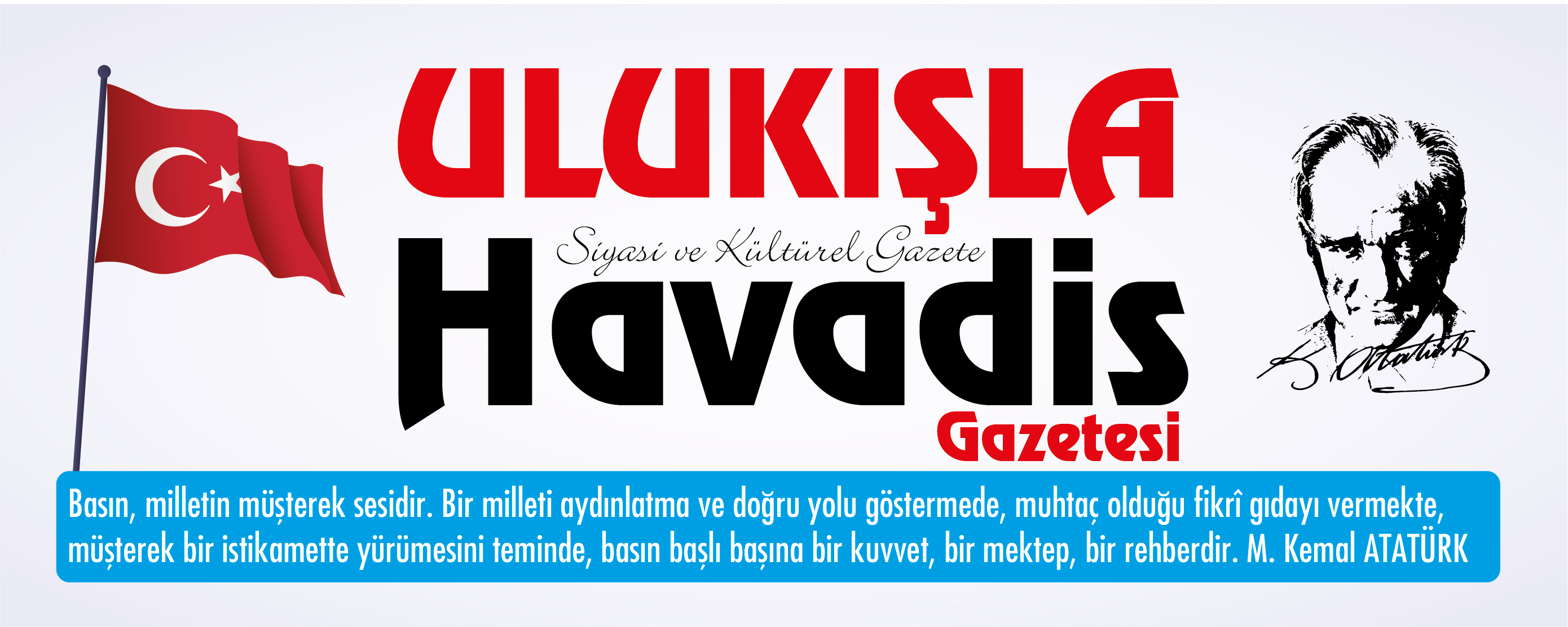
 Gürer, “Kamuya ait elde avuçta ne varsa satılıyor”
Gürer, “Kamuya ait elde avuçta ne varsa satılıyor” Gürer, “Konut satışlarında daralma devam ediyor”
Gürer, “Konut satışlarında daralma devam ediyor” Niğde’nin seçmen sayısı arttı mı?
Niğde’nin seçmen sayısı arttı mı? Gürer, “Hayvan tedavi masraflarında artış risk yaratıyor”
Gürer, “Hayvan tedavi masraflarında artış risk yaratıyor” TMO, Hayvan Üreticisine Değil Sermayeye mi Hizmet Ediyor!
TMO, Hayvan Üreticisine Değil Sermayeye mi Hizmet Ediyor! Niğdeli Taksiciden Örnek Davranış
Niğdeli Taksiciden Örnek Davranış ALTUNHİSAR’DA COVİD-19 VAKASI SIFIRLANDI!
ALTUNHİSAR’DA COVİD-19 VAKASI SIFIRLANDI! NİĞDE HALKI SAĞLIKLI SU İÇİYOR!
NİĞDE HALKI SAĞLIKLI SU İÇİYOR! Yıldız, "Tanıtım Turizmin Kalbidir!"
Yıldız, "Tanıtım Turizmin Kalbidir!" 20’Lİ YAŞLARIN KORKULU RÜYASI: YİRMİLİK DİŞ
20’Lİ YAŞLARIN KORKULU RÜYASI: YİRMİLİK DİŞ Gürer, Besici Kan Ağlıyor
Gürer, Besici Kan Ağlıyor Niğde'de Yaz Spor Okulları Açıldı
Niğde'de Yaz Spor Okulları Açıldı Özdoğan, 1500 Metrede Balkan İkincisi Oldu!
Özdoğan, 1500 Metrede Balkan İkincisi Oldu! GÖLLÜDAĞ GİZEMİNİ HÂLÂ KORUYOR!
GÖLLÜDAĞ GİZEMİNİ HÂLÂ KORUYOR! Niğde Dışladı Aksaray Sahip Çıkıyor!
Niğde Dışladı Aksaray Sahip Çıkıyor! ULUKIŞLA'YI HİÇ UNUTMADILAR!
ULUKIŞLA'YI HİÇ UNUTMADILAR! Niğde'nin Ruhunu Anlamak Gerekir!
Niğde'nin Ruhunu Anlamak Gerekir! İsviçreli Sanatçı Emelie Klein Röportajı
İsviçreli Sanatçı Emelie Klein Röportajı Karadağlı Sanatçı Marija Nikolič Röportajı
Karadağlı Sanatçı Marija Nikolič Röportajı Portekizli Sanatçı Maria Rodrigues Röportajı
Portekizli Sanatçı Maria Rodrigues Röportajı Öztürk, Niğde Outdoor Sporları İçin Bir Cennet!
Öztürk, Niğde Outdoor Sporları İçin Bir Cennet! Kanadalı Fotoğraf Sanatçısı Martin Gaudreault Röportajı
Kanadalı Fotoğraf Sanatçısı Martin Gaudreault Röportajı Hollandalı Sanatçı Ed Hanssen Röportajı
Hollandalı Sanatçı Ed Hanssen Röportajı Norveç’li Sanatçı Sinikka Elfving Röportajı
Norveç’li Sanatçı Sinikka Elfving Röportajı Prof. Dr. Sandallı, “Turizm Geliştirilmelidir!”
Prof. Dr. Sandallı, “Turizm Geliştirilmelidir!” Yeraltı ve Yerüstüne Dair
Yeraltı ve Yerüstüne Dair Niğde İçin Alternatif Yeni Lezzetler
Niğde İçin Alternatif Yeni Lezzetler Heykeltraş Çağlar'dan Göncü'ye Ziyaret
Heykeltraş Çağlar'dan Göncü'ye Ziyaret Kesikbaş Türbesi Onarıldı!
Kesikbaş Türbesi Onarıldı! Artquake-6 sergisi Niğde'de Açıldı!
Artquake-6 sergisi Niğde'de Açıldı!


